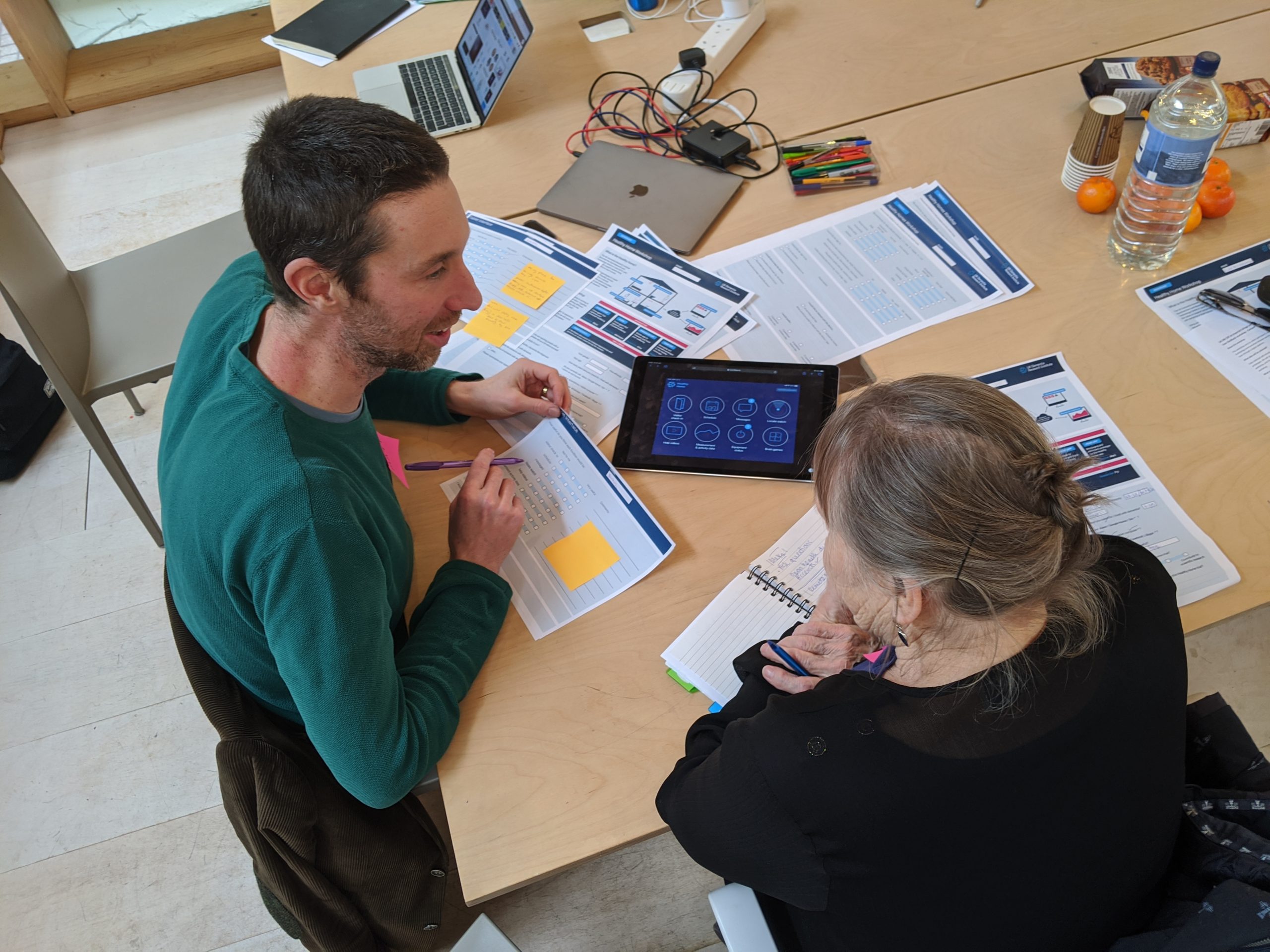
Matthew Harrison provides an insight into the world of human centred design, highlighting how involving users early in the design process can allow us to tap into their expertise and find creative solutions.
COVID has changed many aspects of life permanently. One change is the way we have and will interact with healthcare services. It has put the path to remote and smart care on an accelerated trajectory. Virtual consultations, at home diagnostics, and remote sensors, tablet computers and smart speakers are increasingly part of our lives. But the rush to technology in healthcare risks leaving the demographic who most need it behind. This is a prime example of where Human Centred Design (HCD) comes in. Design is about optimising the relationships between humans and technology, whether it is the clarity of a printed communication, the impact of a building on well-being, the confidence you feel from a new outfit, or the usability (and safety) of an Electronic Patient Record.
Human Centred Design is a process of creating products and services by focusing on the needs and aspirations of the intended users. In healthcare, this will mean service users, their families, and healthcare professionals. Key to success is involving these ‘users’ in the design process, not just to get feedback, but to tap into their expertise as creative contributors to solutions.
Typically we seek out a small number of representative users that bring a wide range of experience and abilities to the process, to help designers see the challenges and opportunities from different perspectives.
The Helix Centre is a design and innovation team, part of Imperial College London, and in partnership with the Royal College of Art. We are based at St Mary’s Hospital, giving unique and valuable access to clinical environments, healthcare professionals and health service users to design with.
Our projects are with a range of partners, from the UK Dementia Research Institute Care Research & Technology Centre (UK DRI CR&T), to NHS Digital. Our position in a teaching hospital gives us unique access to a wide variety of expertise, but we are more often designing to keep people out of hospital, and optimise their recovery in the community, rather than designing directly for the hospital context.
Uncovering challenges
What is particularly exciting with the opportunity that the Helix Centre represents is to bring the Human Centred Design process further up the development stream. We get to work with research teams while the innovation is still in a university laboratory. A current example is a project we are undertaking with Nir Grossman’s lab in the UK DRI at Imperial College London, and members of the Alzheimer’s Society Research Network of people with experience of dementia. Nir’s team are looking at Temporal Interference Brain Stimulation technology in Alzheimer’s Disease. This is an exciting non-invasive, non-pharmaceutical therapy that may have great potential to help with symptoms or onset of dementia. If it proves to be clinically effective, the therapy will involve patients wearing a headset for hour-long sessions on a regular basis, perhaps every day for a fortnight, or twice a week on an ongoing basis. This technology is in the early stages of human trials, but we have the opportunity now to start looking at how the technology can be shaped to fit into the lives of its potential beneficiaries. Ideally the device and service should be accessible at home and used with minimal supervision of experts and professionals to increase the availability and affordability of the therapy.
Our design process starts with working with representative users to communicate and understand the technology’s potential, and together identify the key usability and accessibility challenges to address through design. In this case our conversations have uncovered expected issues around customisation and responsibility, but also challenges around fidgeting, agitation and wondering while using a headset. Another fascinating challenge is that of providing the confidence that the time spent undergoing the therapy is having a worthwhile beneficial effect – which could be hard to quantify if the main benefit is a slowing of deterioration. This will be a critical driver for motivation and compliance, especially if we are successful in making it an at-home therapy.
By uncovering these challenges early, we provide an opportunity to address them thoroughly, and provide maximum chance for the new technology to be adopted and accepted in clinical practice. Our insights will guide the physical form of the design as it evolves, the interfaces to control it, and the expectations and experience of using it. We will likely use simulation studies, with ‘fake’ headsets to test the human factors in the community before introducing the real device, including the activities patients are asked to perform while wearing the headset, and testing the patterns of use within their daily routines.
HCD is often an uneasy bedfellow with academic research; design research favours small sample sizes, with rich detail to create empathy with a range of possible users – and an agile and iterative approach, where we accept uncertainty in the name of creating a sacrificial prototype to test and iterate. Our academic colleagues tend to need statistically significant sample sizes, and a stable proposition that can be robustly described and measured. However, as Human Centre Design processes become better understood, and more widely accepted as an essential ingredient for innovation in healthcare, we find it easier to carve out our contribution.

User testing session for an early version of the Minder App
Inclusive design to fit the needs and aspirations of people
Perhaps the biggest challenge in innovation in healthcare is how we can innovate without leaving behind the people who need it most. We are running a Design in Healthcare Masters module this week, and my colleagues Soh-yon Park and Claudia Hopkins have just delivered a new seminar on inclusive design. They argued that any idea that reinforces or widens healthcare inequities, is not an innovation. The students, a mix of mid-career designers and healthcare professionals working together, applauded loudly to this point.
Design is about mediating the progress of technology to make sure it fits the needs and aspirations of people. It is a tool for increasing sales and market share in markets where the user is the customer. But in healthcare (especially in the UK) the user is rarely the customer. This could be why ‘design in healthcare’ trails other industries, (banking, travel, and retail). We need to make the case to commissioners and managers in healthcare that usability, acceptability and desirability are crucial factors that should be considered in purchasing systems or designing services. It can be hard to quantify these crucial factors that impact safety, job satisfaction and clinical outcomes, compared to other metrics such as cost.
Furthermore we need to create more space for co-design in the healthcare system. We need to tap into the lived experience of professionals and service users to iterate and improve within the NHS, and we need arrangements with suppliers that reinforce a co-design approach of improvement so that the system does not get stifled by legacy systems.
Mr Matthew Harrison is a Senior Designer in the Helix Centre, working within the UK DRI Care Research & Technology Centre at Imperial. The Helix Centre is one of the Institute of Global Health Innovation’s Centres of Excellence.
Further Reading:
1. Minder meeting place demonstrates the variety of ways in which we are applying Human Centred Design across the UK DRI Care Research and Technology Centre to create a smart home platform (“Minder”) to support people living with dementia and provide a testbed to evaluate new interventions and therapies.
2. Helix Centre website provides more information on our past and current projects.